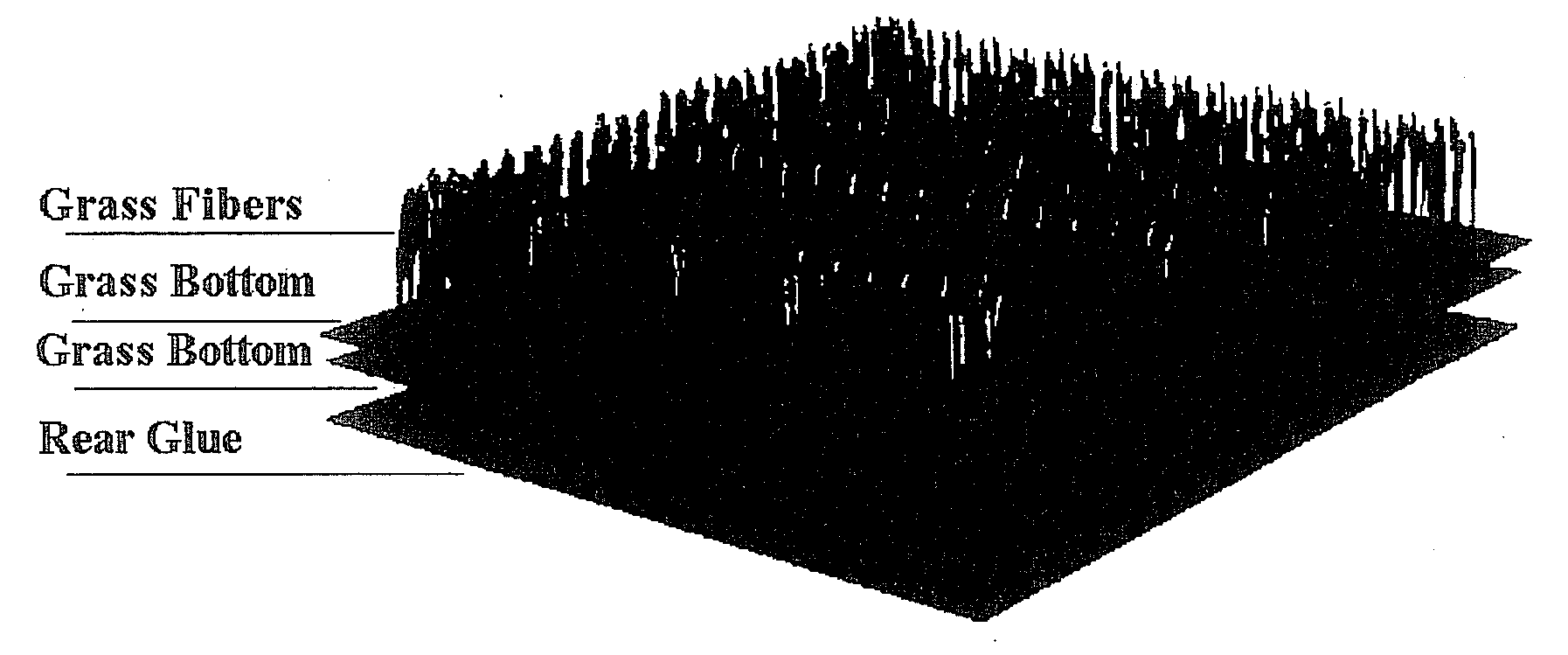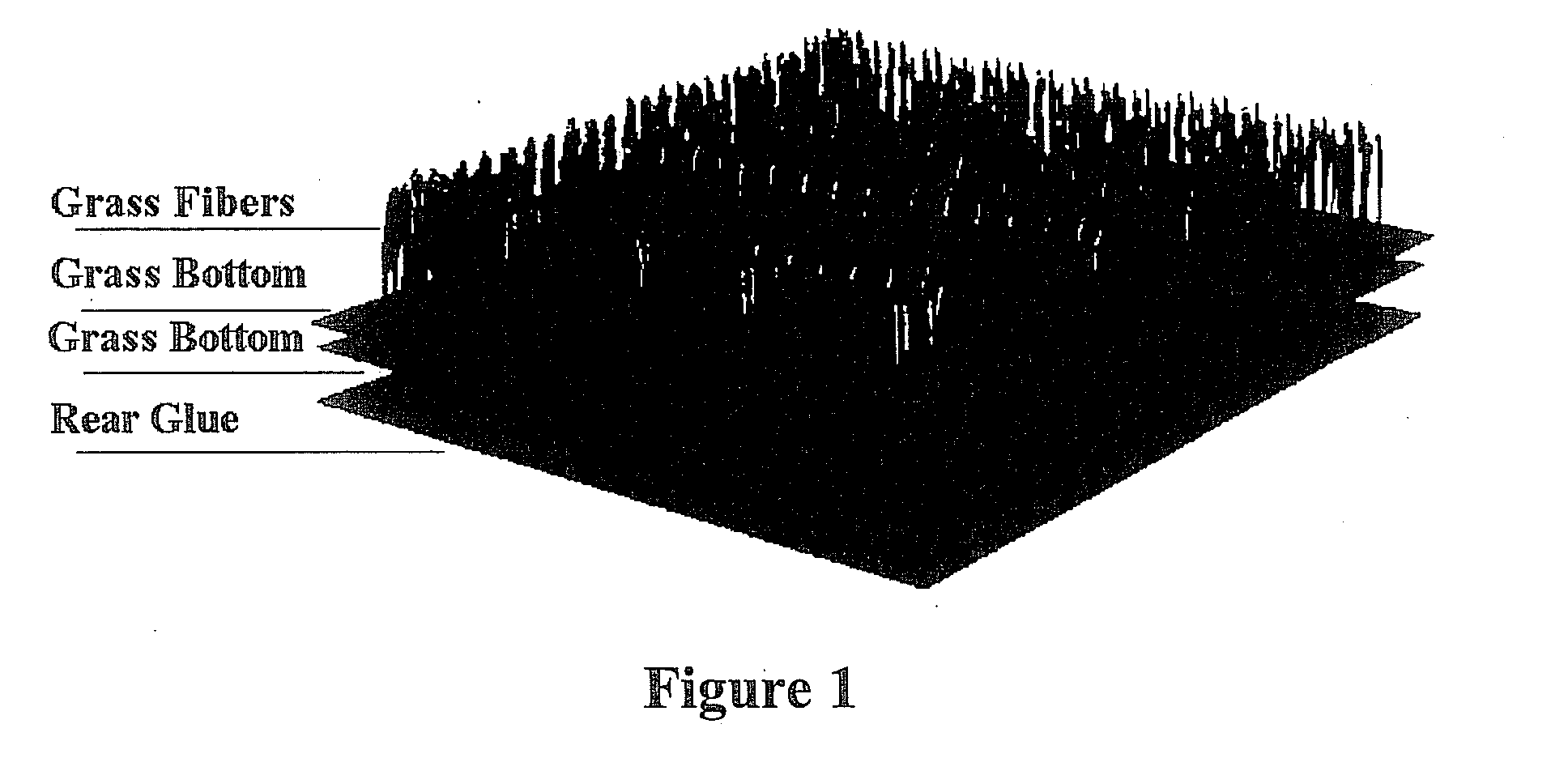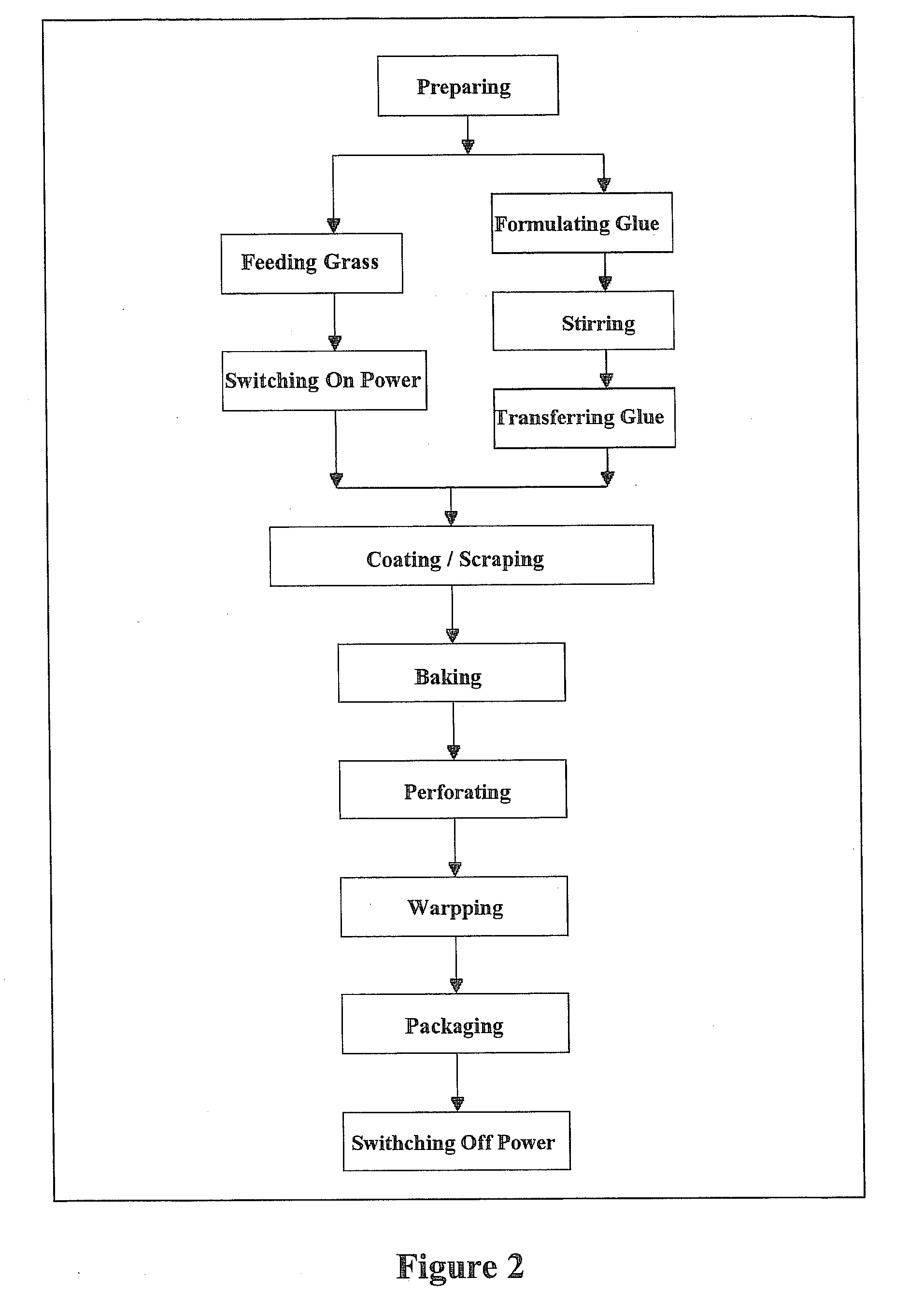Artificial turf and a method of manufacturing the same
a technology of artificial turf and manufacturing method, which is applied in the field of new artificial turf, can solve the problems of not being able to re-manufacture through increasing temperature, hard to draw out the grass fiber from the grass bottom, and thermosetting polymer material, etc., and achieves the effects of saving installation investment, improving production efficiency, and simplifying the manufacturing process
- Summary
- Abstract
- Description
- Claims
- Application Information
AI Technical Summary
Benefits of technology
Problems solved by technology
Method used
Image
Examples
example 1
of the Formulation for the Rear Glue
[0026]100 parts (by weight, the following parts are all by weight unless indicated explicitly) of VAE (an ethylene-vinyl acetate copolymer emulsion), 150 parts of a talc powder and 1 part of an antioxidant 1010.
example 2
of the Formulation for the Rear Glue
[0027]100 parts of VAE (an ethylene-vinyl acetate copolymer emulsion), 180 parts of a heavy calcium carbonate and 2 parts of an antioxidant 1010.
[0028]The manufacturing method of the artificial turf of the invention will be described in detail hereinafter. For convenience, the grass fiber and the grass bottom fixed together hereinafter will be referred as the turf for short.
[0029]The components for formulating the rear glue are pre-mixed uniformly into a glue paste ready for use. Then, the above glue paste is placed in a paste tank, and the turf is coated with the glue paste by passing through the top of the paste tank at a certain speed. The coated turf undergoes a thermal treatment by passing through the hot bellows at a certain speed in which hot air (with a temperature of 110˜150° C.) blows the turf from top to bottom in the hot bellows.
[0030]As shown in FIG. 2, detailed process steps are described as follows.[0031]1) The turf to be coated is ...
PUM
| Property | Measurement | Unit |
|---|---|---|
| viscosity | aaaaa | aaaaa |
| temperature | aaaaa | aaaaa |
| temperature | aaaaa | aaaaa |
Abstract
Description
Claims
Application Information
 Login to View More
Login to View More - R&D
- Intellectual Property
- Life Sciences
- Materials
- Tech Scout
- Unparalleled Data Quality
- Higher Quality Content
- 60% Fewer Hallucinations
Browse by: Latest US Patents, China's latest patents, Technical Efficacy Thesaurus, Application Domain, Technology Topic, Popular Technical Reports.
© 2025 PatSnap. All rights reserved.Legal|Privacy policy|Modern Slavery Act Transparency Statement|Sitemap|About US| Contact US: help@patsnap.com



